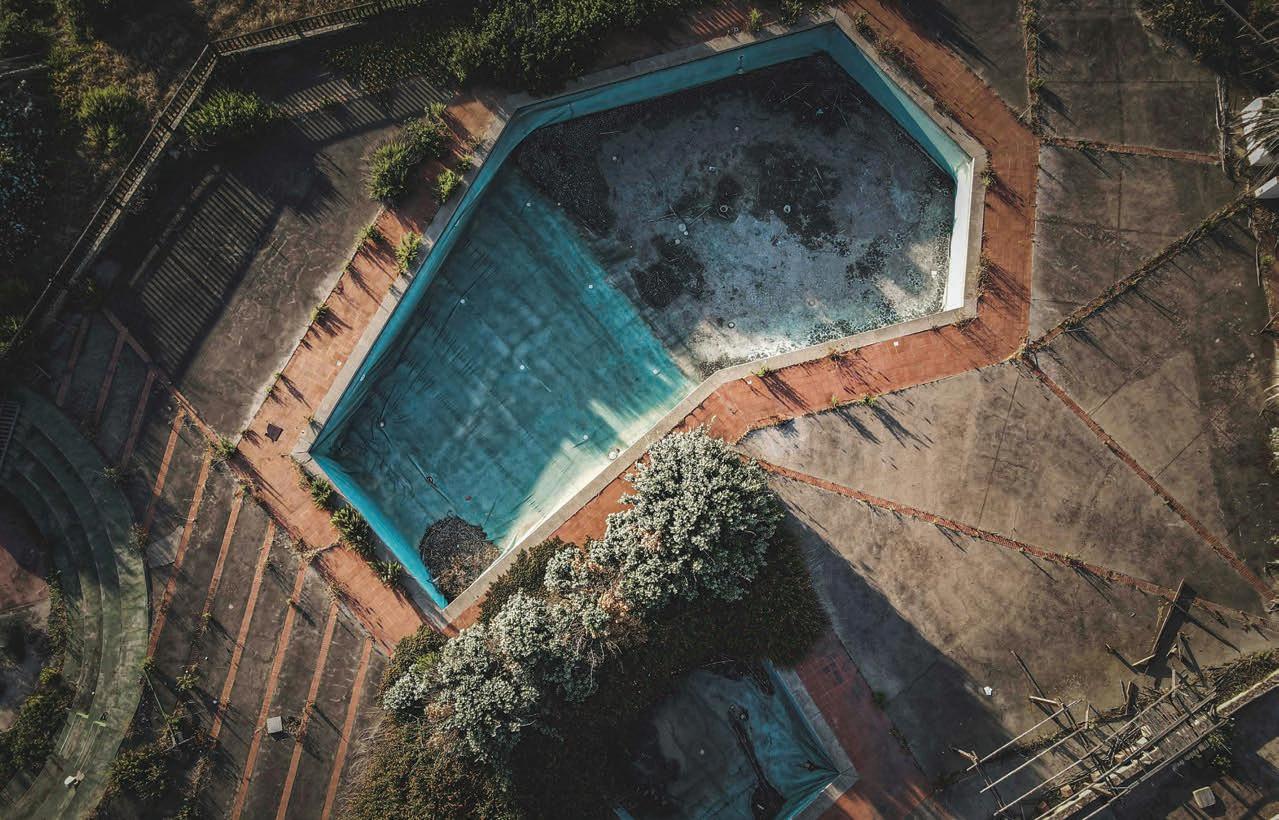
4 minute read
Coverage Corner
SWIMMING POOL COLLAPSE
By Bill Wilson
I had planned on writing about a different topic until 37 minutes ago when I read a social media post from a neighbor on the NextDoor app about a swimming pool collapse resulting from heavy rainfall where we live. This reminded me that I had a similar question from an agent a few months ago and, given recent storms and flooding across the country, I decided that perhaps it’s a good time to write about this issue. And, while this is a personal lines column, I’ll touch on the commercial lines side of the issue that you can share with co-workers.
An agent contacted me in January about a homeowners’ insured who had his in-ground pool drained in order to repair some tile, replace light fixtures, and rebuild the deck around the pool. The contractor drained the pool then did not return for two weeks. In the meantime, the area experienced significant rainfall, and the hydrostatic pressure from the saturated ground around the pool caused it to collapse. In the case of prefab pools, the result can be a “popping” out of the ground.
Of course, the homeowner expected the pool contractor to make it right, but the contractor’s commercial general liability (CGL) insurer denied the claim, citing exclusion j.(6) in the ISO policy. Whether this or other CGL exclusions apply depend on the facts and circumstances of each claim, but my understanding of what happened leads me to believe that the carrier is correct in denying the claim based on several court cases I reviewed.
There are sometimes coverages that can be purchased for such claims, under the “pop-up” coverage banner, but I’ve never invested a lot of research time into such proprietary coverage forms to familiarize myself with typical coverages and exclusions. In any case, it appears that the only recourse against the contractor could be a legal one unless the contractor willingly accepts liability or can find coverage under a performance bond.
In the meantime, the insured filed a claim under his homeowners’ policy, which happened to be ISO form HO 00 03 05 11. Unfortunately, the insurer denied the claim, citing two exclusions: Collapse and Water.
While there is a collapse exclusion in the form, some coverage is provided under the Additional Coverage –Collapse. Unfortunately, this coverage applies primarily to building collapses and, in the case of loss to a swimming pool, only if “the loss is a direct result of the collapse of a building or any part of a building.”
In the case of the Water exclusion, the specific portion of that exclusion that applies here is: “Water below the surface of the ground, including water which exerts pressure on, or seeps, leaks or flows through a building, sidewalk, driveway, patio, foundation, swimming pool or other structure….”
So, despite the agent’s best efforts, there is clearly not first-party coverage under the homeowners’ policy and allegedly not coverage under the contractor’s CGL policy. Again, the homeowner’s only recourse appears to be to directly appeal to the contractor and perhaps get a regulatory body involved and/or the Better Business Bureau.
If you’d like to dig deeper into claims like this, visit the International Risk Management Institute’s website (irmi.com) and search for “Is Pool Pop-Out Excluded?” In addition, an often-cited court case involving pool pop-ups and collapses is Pekin Insurance Company v. Willett, 301 Ill. App. 3d 1034.
Bill Wilson, CPCU, ARM, AIM, AAM is the founder and CEO of InsuranceCommentary.com and the author of six books, including the Amazon 4.8 star “When Words Collide…Resolving Insurance Coverage and Claims Disputes” which Book Authority ranks as the #1 insurance book of all time. He can be reached at Bill@InsuranceCommentary.com.







